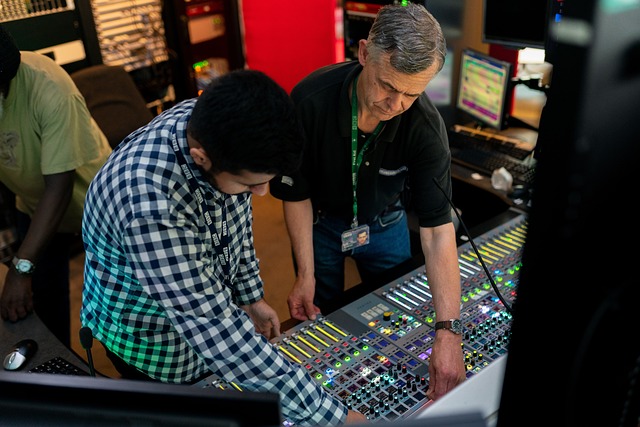Introduction
Big week in tech—no surprise there. AI is continuing its sprint, not stroll, with major players dropping new tools that are smarter, faster, and a little more integrated into everyday life. Regulatory pressure is tightening around the globe, pushing companies to rethink how they handle everything from user data to automated decision-making. Meanwhile, startups are snatching up funding in key sectors like green tech and cybersecurity, quietly shaping what the next decade might look like under the radar.
Why should you care? Because the pace isn’t slowing. If you work in tech—or live anywhere near it—knowing what’s moving and why is no longer optional. The longer you wait to get a grip on these shifts, the more playing catch-up becomes a permanent position. This week’s roundup gives you the need-to-know without the fluff, so you can spend less time guessing and more time delivering.
AI & Machine Learning: The Momentum Keeps Building
AI isn’t slowing down. This week saw major players drop serious updates that push the field forward. OpenAI teased its next-gen multimodal model, designed to handle image, text, and audio input with greater nuance. Google launched Gemini updates focused on enterprise deployment, while Anthropic rolled out Claude’s new training updates, giving it a stronger handle on context and reasoning tasks.
But it’s not just about flashy models. The tools are getting leaner and more useful—integrated into video editing, customer service, scriptwriting, and even data cleanup. Creators are using AI to storyboard before they film. Retail and finance teams are automating repetitive workflows. There’s a noticeable shift from experimentation to integration.
The short version: AI is embedding itself in more workflows, and it’s getting harder to ignore.
For a deeper dive, check out Breakthroughs in AI and Machine Learning This Month.
Tech Policy & Regulation Updates
Governments aren’t just watching tech anymore—they’re writing the rules. In the past few weeks, regulators across the U.S., EU, and China have made moves that developers, platforms, and creators can’t afford to ignore.
The EU rolled out its AI Act framework, with clearer guidelines around transparency and risk assessments for AI systems. It’s a wake-up call for anyone deploying generative tools or machine learning in consumer-facing apps. Meanwhile, in the U.S., there’s fresh energy behind bipartisan proposals to tighten data privacy laws, modeled loosely after Europe’s GDPR. China, on the other hand, is doubling down on content control and algorithm accountability, cutting deep into how platforms operate and prioritize engagement.
These aren’t just headline policies—they come with real consequences. Companies are now staffing up compliance teams and rewriting terms of service to keep pace. Some are localizing data storage, others are retooling their moderation pipelines to meet stricter demands. The competitive edge now lies in staying agile: adapting fast, staying transparent, and minimizing disruption while the goalposts keep moving.
Ignore the regulatory tide, and you risk a takedown—not just of code, but of trust.
Startups & Funding Spotlight
VCs aren’t spraying cash like it’s 2021, but money’s still moving—for ideas that make sense. Big wins this week include Atlas AI raising $70M to scale its predictive infrastructure models, and Greencode locking down $45M for low-carbon data center optimization. Cyberhaven, focused on insider threat protection, also pulled in a healthy $55M Series B, signaling continued momentum in cybersecurity.
At a glance, three sectors are commanding investor attention: AI tools that actually boost productivity (and aren’t just flashy demos), cybersecurity solutions tailored for hybrid work reality, and green tech with a clean path to profitability. Founders that nail utility, not just novelty, are landing term sheets.
As for behavior, VCs are more tactical now. Speed rounds are rarer. Diligence is real again. There’s a clear tilt toward startups that show sustainable traction and build around specific market gaps. Generalist funds are narrowing focus; sector specialists are punching above their weight.
The takeaway? If you’re building something lean, useful, and defensible—you’re speaking the language of 2024’s smart money.
Hardware & Consumer Tech Developments
Big Players, Bigger Moves
Some of the biggest names in tech—Apple, Samsung, NVIDIA, and others—made headlines this week with a fresh wave of announcements. While not every update is a game-changer, there are key shifts that signal where the innovation cycle is headed.
Highlights worth noting:
– Apple unveiled incremental updates to its existing product line, with a focus on performance and sustainability. Expect tighter integration across their growing ecosystem.
– Samsung continued its push in foldables and AI-powered camera tech, refining devices rather than reimagining them.
– NVIDIA announced new GPUs designed to meet the surging demand in both gaming and enterprise AI applications.
Revolution or Iteration?
While some announcements feel familiar, others hint at major change just beneath the surface.
What’s truly exciting:
– Improvements in AI processing power across devices—not just in the cloud
– Early prototypes of solid-state batteries that could redefine mobile device longevity
– Enhanced graphics and power efficiency for both pro users and gamers
What feels recycled:
– Cosmetic changes marketed as innovation
– Annual spec bumps without meaningful feature additions
The Global Chip Race: A New Phase
The semiconductor industry continues to recover from supply chain challenges while pivoting toward next-gen capabilities.
Key developments this week:
– TSMC and Intel made moves to expand domestic and international manufacturing
– Governments in the U.S. and Europe are increasing subsidies to local chipmakers
– OEMs are racing to develop vertical supply chains to gain independence and reduce bottlenecks
Why it matters:
– Faster chips fuel every aspect of tech innovation—from AI to gaming to smart homes
– Supply chain stability is shifting from a risk to a competitive advantage
– Countries see chip manufacturing as both an economic and national security pillar
The bottom line? Hardware innovation is in a transition phase. Some flashes of true disruption are already emerging, but much of what we see now is groundwork being laid for what’s next.
Shifts in the Workforce & Remote Tech
The tech workforce isn’t staying put. Talent continues to bounce between scrappy startups and legacy firms—each offering different trade-offs. Startups promise creative freedom and speed but often come with burnout risk. Legacy companies bring stability and resources, but can move slow and stifle innovation. What’s new in 2024 is how easily talent flows between them, driven by contract work, hybrid setups, and sheer necessity.
Remote collaboration’s also leveled up. Platforms like Notion, Figma, and Linear are tightening workflows, killing off clunky email threads and bloated Zoom marathons. Emerging tools are sharper, faster, and more intuitive. Teams now live inside streamlined systems designed for async clarity.
But while collaboration tech gets leaner, automation is doing its quiet work too. Entire roles—especially in QA, logistics, and support—are being redefined or phased out. AI doesn’t mean mass layoffs everywhere, but it’s reshaping the perimeter. Jobs that don’t evolve fast enough risk disappearing.
Tech work in 2024 is fluid, fast, and increasingly shaped by smart tools. The ones thriving? They’re adapting, not waiting.
Final Takeaways
This week’s tech headlines painted a clear picture: speed and precision are everything. AI tools continue to expand reach and redefine productivity. Meanwhile, regulatory frameworks are tightening, forcing startups and giants alike to move with both innovation and caution. Hardware advances are impressive, but hype doesn’t always equal impact. Improvements in chips, interfaces, and mobility are more iterative than earth-shattering—for now.
If you’re navigating this space, focus on a few constants: build literacy in AI, stay alert to compliance shifts, and keep an eye on the leanest startups in your niche—they often hint at where the market’s headed. The landscape isn’t chaotic; it’s layered. To thrive, you’ll need more than just updates—you’ll need curation. In other words, knowing how to separate signal from noise isn’t just helpful anymore. It’s foundational.


 Roys Chamblisster is a tech author at wbsoftwarement known for his clear, practical insights into modern software development. He focuses on writing about programming frameworks, automation tools, and the latest trends shaping the tech world. Roys is passionate about helping developers build smarter and more efficient digital solutions.
Roys Chamblisster is a tech author at wbsoftwarement known for his clear, practical insights into modern software development. He focuses on writing about programming frameworks, automation tools, and the latest trends shaping the tech world. Roys is passionate about helping developers build smarter and more efficient digital solutions.

